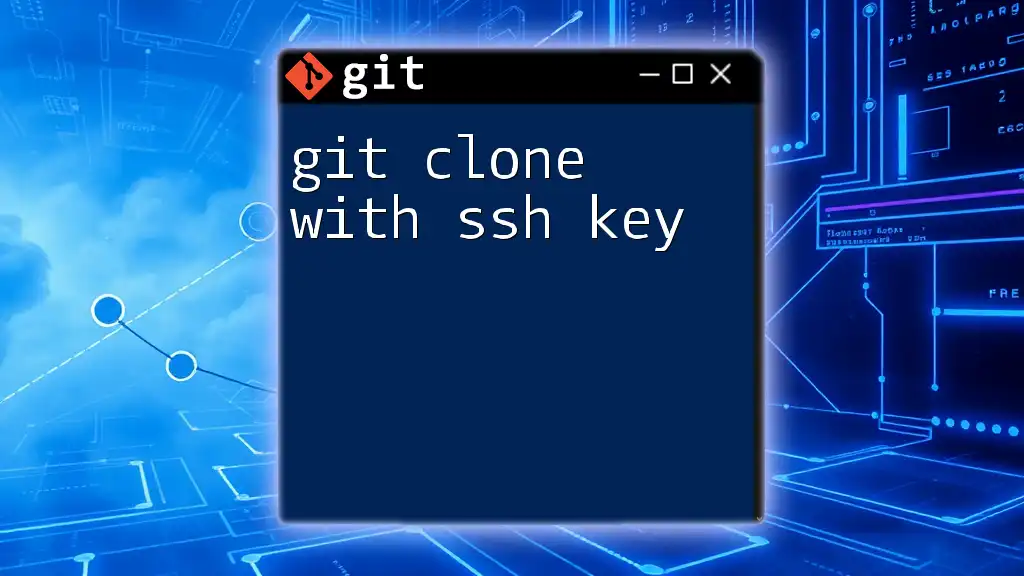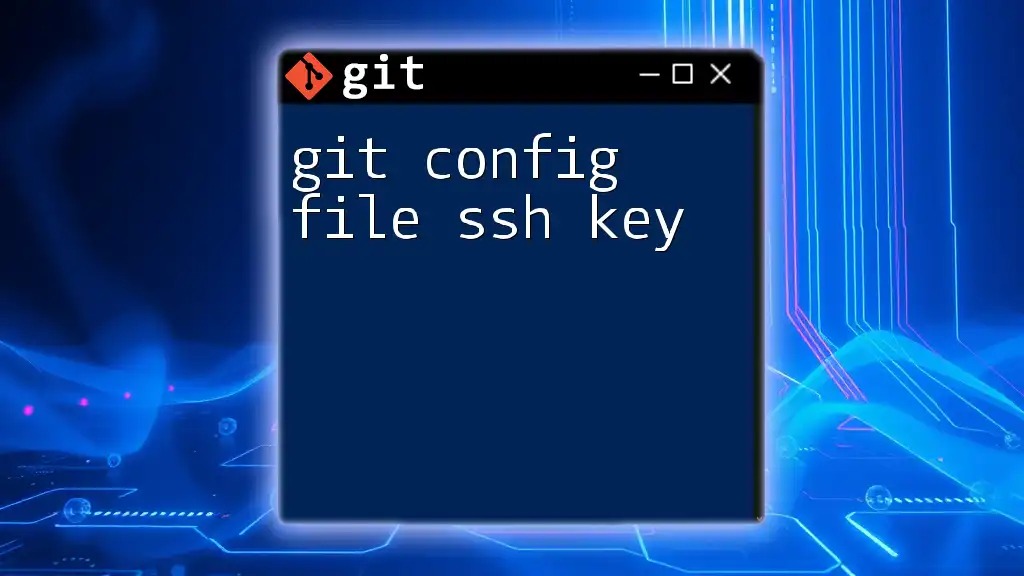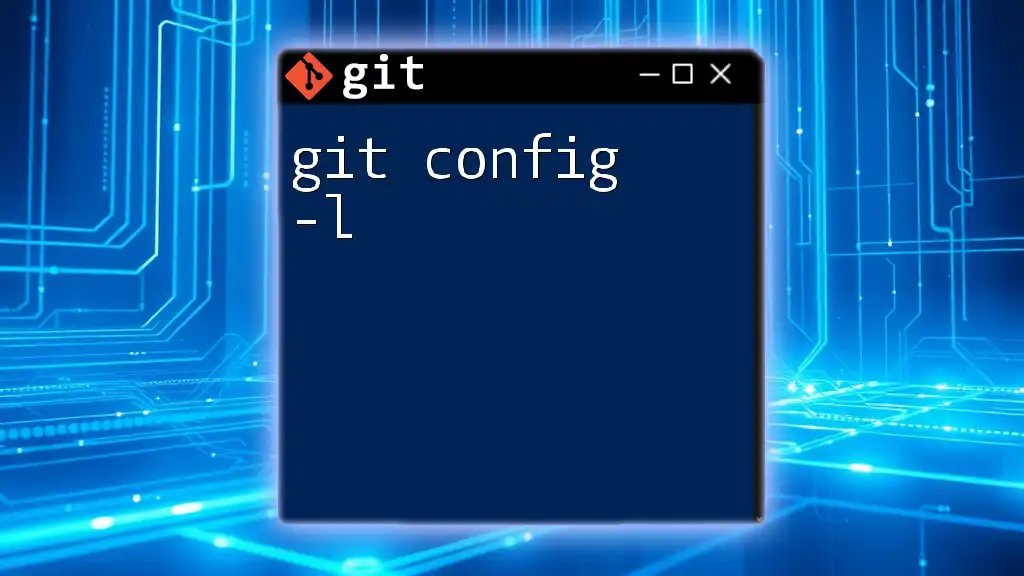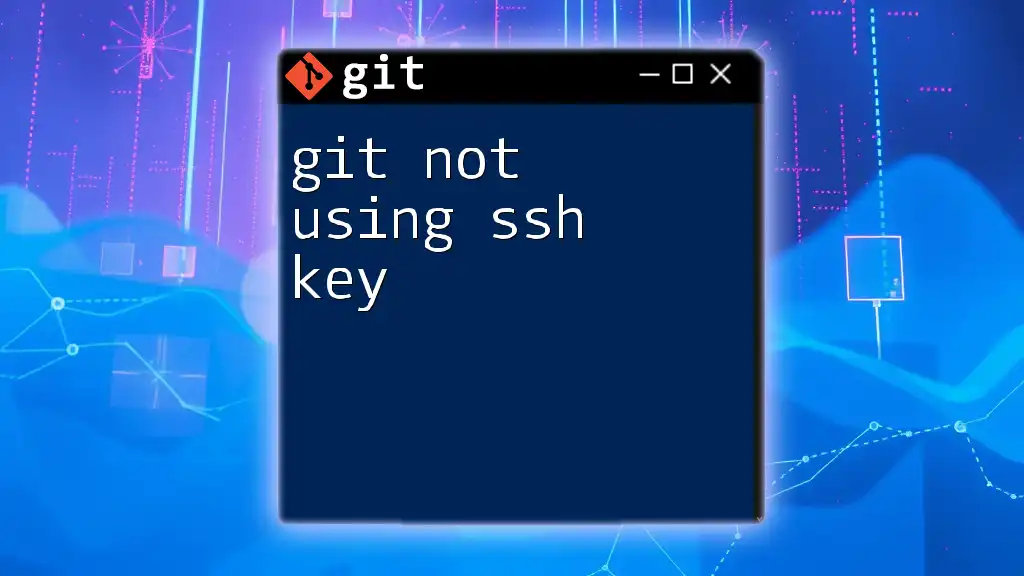The Git config file can be used to specify the SSH key for authentication with remote repositories by setting the `IdentityFile` option in the `~/.ssh/config` file.
Host github.com
User git
IdentityFile ~/.ssh/id_rsa
What is an SSH Key?
An SSH key is a secure access credential used for logging into servers or other devices. Unlike traditional passwords, SSH keys are cryptographic key pairs that provide enhanced security. An SSH key comprises a public key and a private key. The public key is stored on the server, while the private key remains secure on your local machine. This mechanism allows for encrypted communication and verification without the need to enter your password each time.

Why Use SSH with Git?
Using SSH rather than HTTPS to connect to Git repositories offers several advantages:
- Security: SSH keys provide a more secure method for authenticating to your remote repositories, as they are less susceptible to brute-force attacks compared to password authentication.
- Convenience: Once your SSH key is set up and added to your Git hosting service (like GitHub), you won’t need to enter your credentials every time you interact with the repository.

Understanding the Git Configuration File
What is the Git Config File?
The Git config file is a configuration file where Git stores settings that dictate how Git operates in different environments. It allows you to customize your Git experience on three distinct levels:
- Local configuration: Specific to a single repository, stored in `.git/config` within that repository.
- Global configuration: Settings that apply to the user on their machine, usually found in `~/.gitconfig`.
- System configuration: Configuration settings for all users on a system, typically found in the Git installation directory.
Structure of the Git Config File
The Git config file employs a simple structure composed of key-value pairs. These pairs determine various settings and behaviors within Git. An example configuration might look like this:
[user]
name = Your Name
email = your_email@example.com
[core]
editor = vim

Setting Up SSH Keys for Git
Generating an SSH Key Pair
To utilize SSH with Git, you first need to generate an SSH key pair. Here’s how to do it seamlessly:
- Open your terminal.
- Enter the following command:
ssh-keygen -t rsa -b 4096 -C "your_email@example.com"
This command instructs your system to create an RSA key pair of 4096 bits, adding a comment with your email for identification.
During this process, you’ll be prompted to choose a location to save the keys. The default location is typically `~/.ssh/id_rsa`. You can also add a passphrase for added security, though it's optional.
Adding Your SSH Key to the SSH-Agent
After generating the SSH key pair, it's crucial to add the private key to the SSH-Agent, which manages your SSH keys and their passphrases. Follow these steps:
- Start the SSH-Agent:
eval "$(ssh-agent -s)"
- Add your newly created SSH key to the agent:
ssh-add ~/.ssh/id_rsa
This step ensures that your SSH key can be used for authentication without needing to enter your passphrase each time.

Configuring the Git Config File for SSH Key Usage
Locating Your Git Config File
To effectively utilize your SSH key, you may need to adjust your Git config file. Here’s how to find it:
You can view your current Git configuration using the following command:
git config --list
This will display global settings and can help you identify if your SSH key settings are configured correctly.
Editing the Git Config File
There are multiple ways to edit the Git config file, whether through the command line or by opening it in a text editor. To set the SSH URL for your repositories, you can execute:
git remote set-url origin git@github.com:username/repo.git
This command replaces the URL of your project's origin with the SSH URL, thus allowing you to push and pull without entering your username and password.

Testing Your SSH Configuration
Checking SSH Connection to GitHub
To ensure your SSH keys are functioning correctly, you can test the connection to GitHub by executing:
ssh -T git@github.com
A successful connection will yield a message indicating you’ve authenticated, but GitHub will deny shell access, confirming everything is set up correctly.
Troubleshooting SSH Key Issues
Should you encounter issues, two common errors are prevalent:
- “Permission denied (publickey)”: This indicates that Git cannot find your SSH key, which may mean it hasn't been added to the SSH agent or is not linked to your GitHub account.
To resolve this, ensure your public key is added to your GitHub SSH settings and that the SSH agent is running.

Security Best Practices for SSH Keys
Regularly Rotating Your SSH Keys
It’s important to practice good security hygiene by periodically rotating your SSH keys. This involves generating new key pairs and removing outdated ones, thus minimizing the risk of unauthorized access.
Protecting Your SSH Key with a Passphrase
Enhancing your security by adding a passphrase provides an additional layer of protection. If someone obtains your private key file, they will still need the passphrase to gain access. During key generation, you can include a passphrase halting unauthorized access quickly.

Conclusion
Setting up and properly configuring your git config file ssh key is essential for effective and secure Git operations. By following the outlined steps, you should be equipped to manage your SSH keys confidently and take full advantage of Git’s capabilities.
Ensure you test your configuration thoroughly and adhere to security best practices to safeguard your development environment. Whether you are a seasoned developer or a newcomer, mastering SSH key usage with Git will significantly improve your workflow.
Call to Action
Explore the power of SSH keys for Git! We encourage you to implement these steps and simplify your project management. For more resources and guidance, check out our workshops and tutorials designed to enrich your Git skills further.
Additional Resources
For more detailed explanations, refer to the official Git documentation and other trustworthy resources dedicated to SSH key creation and Git setup.

















